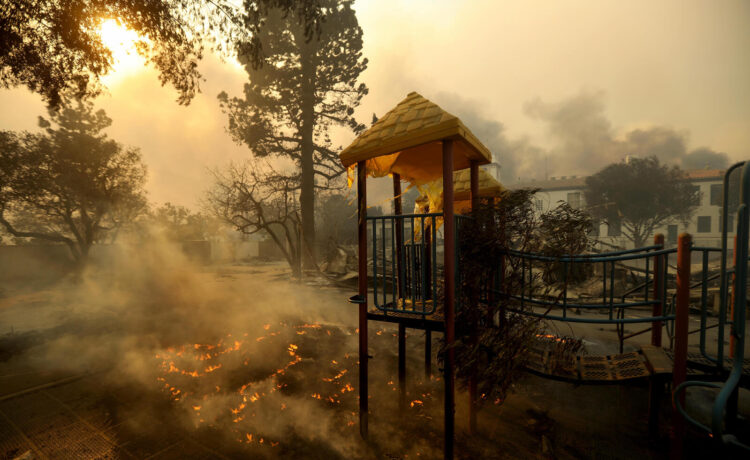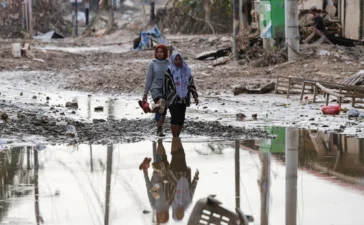‘Like a bomb had gone off’
The post-fire experience in Sonoma and Butte counties provides a preview of what lies ahead in Los Angeles. Thousands of homes and numerous schools were destroyed in a spate of fires from 2017-20, leaving residents to resurrect entire communities.
“Those first few weeks were surreal, almost primordial. It was like a bomb had gone off,” said Andrew Bailey, head of Anova Center for Education, a private school in Sonoma County that serves special education students enrolled in public schools. Anova was destroyed in the 2017 Tubbs Fire, leaving its 125 students without a campus.
There was no school at all for three weeks while staff hunted for classroom space at other locations. Eventually they brought in portables and launched an ambitious fundraising campaign to pay for a new school. Last week, the new school finally opened — more than seven years after the fire.
“It was miraculous that we were able to do this,” Bailey said. “It was incredibly hard work, but now the headwinds have dissipated and our kids now have a great new school.”
Attending school at a hardware store
In Paradise, a Butte County town which was nearly entirely destroyed in the 2018 Camp Fire, the school district is still recovering. Four school sites were destroyed and nine were extensively damaged. A big obstacle in rebuilding, school officials said, was not knowing how many students to expect. More than 80% of the town burned down, and it was unclear how many residents planned to move back. Enrollment in Paradise Unified dropped from 3,500 before the fire to 1,500 in 2019. It’s now up to 1,700.
Although the state was helpful, the paperwork and funding process took time, Superintendent Tom Taylor said. Meanwhile, students attended school any place officials could find space: other school districts, some 20 miles away; warehouses; even a hardware store. (The store was cleared of merchandise. Students ate lunch at the check-out counter.)
The district has so far spent $155 million to rebuild campuses, but needs $150 million more to fix everything that needs fixing, Taylor said. The district is hoping to break ground on Paradise Elementary School, one of the schools that was completely destroyed.
“There were a few years where all staff worked harder than we ever have. Long days, seven days a week, no time off,” Taylor said. “We’re still not done. … But our staff understands that schools are the center of a community, and we want our schools to help lead the return of the town.”
Prioritizing mental health
In some ways, Los Angeles schools will have it a bit easier than those in Sonoma and Butte. The state now has well-established disaster relief protocols, and there are plenty of experts who can advise. Because of COVID-19, most schools already have distance learning systems in place and robust social-emotional support for students.
Support for mental health – for staff as well as students – is a crucial piece of recovery, school officials in Sonoma and Butte said.
In Sonoma County, schools learned early on how to screen students for anxiety. They also created partnerships with local nonprofits and health clinics, and the County Office of Education trained teachers to lead class discussions and otherwise support students who felt traumatized by the fires.
“In situations like this, you’re never going to have enough money for one-to-one counseling for everyone who needs it,” said Mary Champion, a school psychologist with the Sonoma County Office of Education. “That’s why it’s so important to train educators, to take some of the pressure off clinicians.”
Tyson Dickinson, director of the office’s Department of Behavioral Health and Well-Being, said districts in Los Angeles should expect the recovery process — beyond the replacement of buildings — to take a long time. Sonoma County’s last major fire was in 2020, and it’s still never far from residents’ minds.
“Any time it’s windy, warm and dry, any time there’s smoke, you can see the stress building,” Dickinson said. “From August through January everyone is on edge. It’s just a different world now.”













